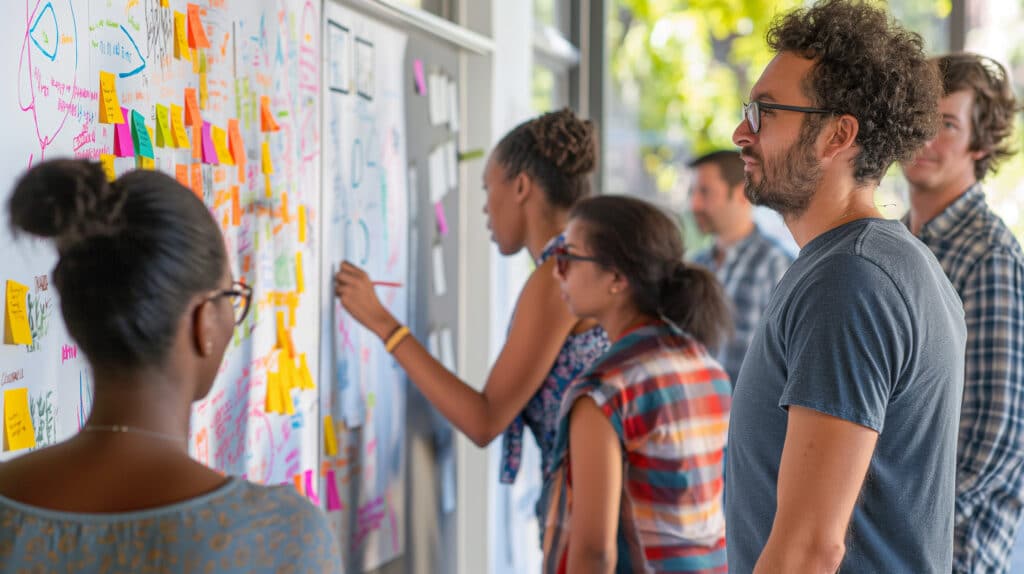Creativity, often pigeonholed into artistic endeavours, is fundamentally a broader process that drives innovation, solves complex problems, and propels personal and professional development. Drawing inspiration from Sir Ken Robinson’s The Element: How Finding Your Passion Changes Everything, this article delves into identifying and nurturing one’s personal creativity, complemented by practical exercises to stimulate creative thinking.
Understanding Personal Creativity
At its essence, personal creativity involves generating original ideas that have value. It’s a confluence of imagination, critical thinking, and the ability to see connections that initially aren’t apparent. Sir Ken Robinson champions the idea of being in your “element” — a state where personal passions and natural talent align, thereby maximising creativity and satisfaction.
Identifying Your Creative Strengths
Recognising one’s creative strengths begins with self-reflection. Here are a few strategies to help identify these strengths:
- Personal Inventory: List activities that deeply engage you and those where time seems to fly. This often points to areas where your natural talents lie.
- Feedback Analysis: Regularly seek feedback on different aspects of your work or hobbies. Patterns in positive feedback can highlight your strengths.
- Success Tracking: Keep a record of your projects, especially those that were successful or brought satisfaction. Reviewing these can reveal what and when you perform best.
Identifying Your Creative Weaknesses
Identifying weaknesses is equally crucial. Weaknesses aren’t just areas of lesser skill but could be limitations in approach or thinking style. To pinpoint these:
- Challenge Reflection: Consider situations where you felt stuck or projects that didn’t turn out as expected. Analyse what was lacking or what you found challenging.
- Constructive Criticism: Embrace constructive feedback. Understanding areas where you can improve is vital for personal growth.
- Comparative Analysis: Compare your work with peers or industry standards to identify areas for improvement.
Exercises to Stimulate Personal Creativity
Stimulating personal creativity can be approached through various exercises that promote thinking outside the box and foster innovative thinking.
Here are a few proven techniques:
Here are a few proven techniques:
1. Mind Mapping
A mind map is a visual tool that helps brainstorm and connect ideas organically. Start with a central concept and expand outwards with associated ideas or actions. This exercise helps in visually organizing thoughts and can spur connections not previously considered.
2. The Six Thinking Hats
Developed by Edward de Bono, this method involves looking at problems from six distinct perspectives. Each ‘hat’ is a different style of thinking (optimism, judgment, emotion, data, creativity, management). This technique allows you to explore different aspects of an issue creatively and thoroughly.
3. SCAMPER
SCAMPER is an acronym for Substitute, Combine, Adapt, Modify, Put to another use, Eliminate, and Reverse. Apply these verbs to existing products, services, or problems to spark new ideas and innovative solutions.
4. Creative Restraints
Setting constraints can paradoxically enhance personal creativity. Limiting factors such as time, resources, or materials forces you to think differently and innovatively. Try setting a challenge to create something using only a handful of elements or within a tight deadline.
Implementing Creative Routines
Incorporating creative exercises into a daily or weekly routine can help strengthen your personal creativity muscles. Dedicate time to engage in activities outside your comfort zone. Whether it’s writing, sketching, coding, or any other activity, the key is consistency and a willingness to experiment and learn.
Nurturing a Creative Environment
Creating an environment that fosters personal creativity is crucial.
This involves:
- Encouraging Risk-Taking: Allow yourself to fail and learn from your mistakes without harsh judgments.
- Seeking Diverse Experiences: Engage with diverse cultures, disciplines, and people to widen your perspective and spark new ideas.
- Maintaining an Idea Journal: Keep a notebook or digital record of ideas, thoughts, and inspirations that come to you throughout the day.
Conclusion
Creativity is not confined to artists or musicians; it is a vital skill in various disciplines, from science to business.
By understanding and leveraging your creative strengths and addressing your weaknesses, you can enhance your ability to think creatively.
Exercises like mind mapping, SCAMPER, and the Six Thinking Hats can provide the structure needed to unleash your personal creativity. Remember, like any skill, personal creativity grows the more it is nurtured and practiced. Explore these exercises, find what resonates with your creative spirit, and prepare to transform your personal and professional life by tapping into the power of creativity.
Some thoughts...
- Which creative exercise have you found most effective in unlocking your creative potential and why?
- How do you overcome creative blocks, and what strategies help you regain your creative momentum?
- Can you share a personal success story where identifying your creative strengths or weaknesses led to a breakthrough in your work or personal project?




